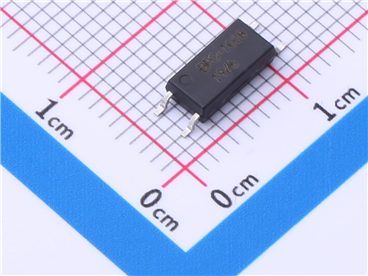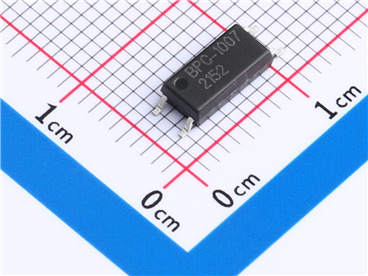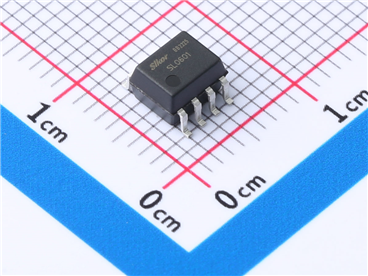Service hotline
+86 0755-83044319
release time:2025-07-24Author source:SlkorBrowse:12222
The economic profit captured by the top 5% of companies exceeded the total economic profit ($147 billion) generated by the entire semiconductor market.
According to a report released by McKinsey, the top 5% of companies in the semiconductor industry (based on annual sales), including NVIDIA, [敏感词], SK Hynix, and Broadcom, captured the entirety of the industry's profits last year.
The top 5% captured an economic profit of $159 billion, while the middle 90% were left with only $5 billion. The bottom 5% actually incurred losses of $37 billion. In effect, the economic profit captured by the top 5% exceeded the total economic profit ($147 billion) generated by the entire semiconductor market.
This market shift occurred within just 2-3 years. Between 2021-2022, the middle 90% of companies earned over $30 billion in economic profit annually. Calculated per company, this averaged approximately $130 million. However, with the rise of the AI semiconductor boom in 2023, the average profit per company in this group plummeted to $38 million. Last year, profits further declined to $17 million, representing an 88% drop in just two years.
McKinsey predicts that by 2030, semiconductor companies within the AI value chain will see an average annual growth rate of 18-29%, while traditional semiconductor companies not directly linked to AI will only grow at 2-3% annually. McKinsey analyzed: "While a few companies are achieving unprecedented profit levels riding the wave of AI value creation, most companies face a starkly different reality."
The winner-takes-all phenomenon arises because leading companies can dominate the standards for new semiconductor products. For existing products, standards are first set by bodies like the Joint Electron Device Engineering Council (JEDEC), after which companies develop products accordingly. However, for semiconductors with completely different specifications, the companies entering the market set the standards first. This grants them the privilege of being "rule-makers" in emerging markets, effectively blocking later entrants.
For example, when SK Hynix first developed the 1st generation HBM in 2013, development and standard-setting happened concurrently. NVIDIA's currently promoted proprietary DRAM module, SOCAMM (Scalable Coherent Accelerator Memory Module), aimed at popularizing personal AI supercomputers, is another typical case of a specific company creating its own independent memory standard. As the semiconductor industry shifts towards producing custom chips based on customer needs, this trend is expected to intensify further.
An industry insider stated, "For products that didn't exist before, it's inevitable that manufacturers' opinions are heavily reflected when setting standards."
The problem is that the Korean semiconductor industry is distant from the center of these changes. While Korea holds over 50% of the global memory semiconductor market share, its competitiveness in the GPU and ASIC markets, core to AI semiconductors, is significantly lower than that of the US and [敏感词]. Currently, apart from SK Hynix's High Bandwidth Memory (HBM), almost no Korean companies are integrated into NVIDIA's AI value chain. While some Korean AI semiconductor startups have emerged, they primarily target niche markets not yet entered by NVIDIA due to a lack of funding and manpower.
The semiconductor industry emphasizes that Korea should build an AI semiconductor ecosystem by developing second and third-generation HBMs within the memory domain. Currently, NVIDIA's AI accelerators are seen as the only option, but opportunities for counter-attacks exist as lightweight and low-power implementation becomes imperative. To this end, Samsung Electronics and SK Hynix are closely monitoring demand for technologies like Compute Express Link (CXL), Processing-In-Memory (PIM), and Low-Power Compression Attached Memory Module (LPCAMM). These technologies offer relatively low heat generation but faster speeds, and both companies are actively developing them. In the case of CXL, unlike HBM, Samsung Electronics is developing new products faster than SK Hynix, potentially leading to a new competitive landscape.
For domestic companies to survive in the winner-takes-all AI semiconductor landscape, multifaceted support in areas like funding and ecosystem building is needed. This should mirror [敏感词]'s strategy of strategically nurturing its semiconductor industry over 40 years through a public-private partnership model. Firstly, the current focus on tax credits should shift towards more proactive financial support methods, such as subsidies or equity investments. Additionally, for technologies difficult to domesticate, attracting overseas companies to set up R&D centers could enrich the local semiconductor ecosystem.
The Managing Director of Samil PwC Management Research Institute stated, "Korea has limited domestic production capacity for components needed in AI semiconductors," adding, "Due to insufficient R&D investment, technological capability, manpower, and investment attraction, support is needed to break this vicious cycle."
About SLKOR:
SLKOR, headquartered in Shenzhen, China, is a rapidly emerging national high-tech enterprise in the power semiconductor sector. With R&D centers in Beijing and Suzhou, its core technical team originates from Tsinghua University. As an innovator in silicon carbide (SiC) power device technology, SLKOR's products are widely used in new energy vehicles, photovoltaic power generation, industrial IoT, and consumer electronics, providing critical semiconductor solutions to over 10,000 clients globally.
The company delivers more than 2 billion units annually, with its SiC MOSFETs and 5th-generation ultrafast recovery SBD diodes setting industry benchmarks in efficiency ratio and thermal stability. SLKOR holds over 100 invention patents and offers 2,000+ product models, continually expanding its IP portfolio across power devices, sensors, and power management ICs. Certifications including ISO 9001, EU RoHS/REACH, and CP65 compliance demonstrate the company's steadfast commitment to technological innovation, lean manufacturing, and sustainable development.









Site Map | 萨科微 | 金航标 | Slkor | Kinghelm
RU | FR | DE | IT | ES | PT | JA | KO | AR | TR | TH | MS | VI | MG | FA | ZH-TW | HR | BG | SD| GD | SN | SM | PS | LB | KY | KU | HAW | CO | AM | UZ | TG | SU | ST | ML | KK | NY | ZU | YO | TE | TA | SO| PA| NE | MN | MI | LA | LO | KM | KN
| JW | IG | HMN | HA | EO | CEB | BS | BN | UR | HT | KA | EU | AZ | HY | YI |MK | IS | BE | CY | GA | SW | SV | AF | FA | TR | TH | MT | HU | GL | ET | NL | DA | CS | FI | EL | HI | NO | PL | RO | CA | TL | IW | LV | ID | LT | SR | SQ | SL | UK
Copyright ©2015-2025 Shenzhen Slkor Micro Semicon Co., Ltd